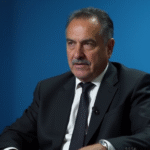Introduction
Claudia Sheinbaum’s first year as Mexico City’s mayor has been portrayed as a period of social achievements. Programs like Pensión Mujeres Bienestar and investments in healthcare and infrastructure are showcased as evidence of a new direction. However, upon closer examination of the numbers and context, it becomes apparent that there are partial advances and promises yet to materialize in the daily lives of Mexicans.
Healthcare: Partial Progress and Unfulfilled Promises
Public health spending remains at a mere 2.5% of the GDP, far from the international minimum recommendation. Meanwhile, 41% of healthcare spending comes directly from families’ pockets, implying that millions must finance healthcare with their own resources, which should be a guaranteed right. The consolidation of IMSS-Bienestar and centralized medicine purchases are presented as solutions, but in 2024, there were still 11 million unfulfilled prescriptions, demonstrating that shortages persist and the narrative exceeds reality.
Life expectancy reached 75.4 years in 2025, barely recovering pre-pandemic levels without improving critical indicators like maternal mortality. The 34% cuts to programs for people without social security and insufficient funding for IMSS-Bienestar reflect more of a reallocation of resources than genuine system strengthening. If this is the idea of “transformation,” it seems more like a limited budget rebranding.
Infrastructure: Ambitious Announcements, Pending Delivery
Announcements in infrastructure are ambitious. The National Road Infrastructure Program 2025-2030 contemplates up to 373 million pesos, promising 162,000 jobs in 2025. Rail policy is presented as a flagship: the Mexico-Querétaro Train, with 75 million pesos of investment and half a million expected jobs, or the AIFA-Pachuca Train, which should improve mobility for 1.2 million people. For now, these remain promises. In this country, we know: tracks are built faster in speeches than on the ground.
Energy Sector: Dualities and Structural Problems
While expansion plans project 29,000 megawatts and 625 million pesos in investment, the Dos Bocas refinery operates at half capacity, and the Puerto Peñasco solar plant, though symbolic, is merely a patch in a system with structural problems. In water, projects like El Cuchillo II, El Zapotillo, and Agua Saludable for La Laguna are announced with 15.7 billion pesos in investment, but the water crisis’s magnitude renders all insufficient.
Balancing the First Year in Health and Infrastructure
The balance of Sheinbaum’s first year in health and infrastructure is clear: grand plans are announced, but structural improvements remain pending. The government boasts transformations, but families still face the same shortcomings. More concerning is that these sectors are merely the prelude, as the situation in security and social well-being is even more worrying.
Key Questions and Answers
- Q: How has public health spending fared under Sheinbaum’s administration? A: Public health spending remains at 2.5% of the GDP, far from international recommendations.
- Q: What are the challenges in healthcare access for Mexicans? A: 41% of healthcare spending comes directly from families’ pockets, implying that millions must finance healthcare with their own resources.
- Q: What are the infrastructure investment plans and their current status? A: The National Road Infrastructure Program 2025-2030 contemplates up to 373 million pesos, but many projects remain unfulfilled.
- Q: How is the energy sector performing under Sheinbaum’s administration? A: While expansion plans project 29,000 megawatts and 625 million pesos in investment, the Dos Bocas refinery operates at half capacity, and structural problems persist.
- Q: What are the implications of these pending improvements in health and infrastructure? A: Families still face the same shortcomings, and the situation in security and social well-being is even more worrying.






